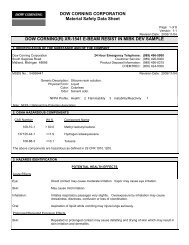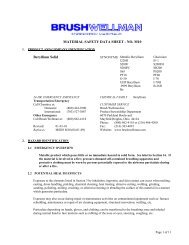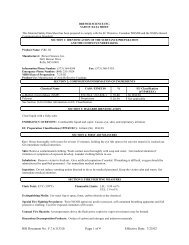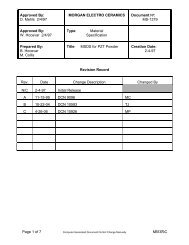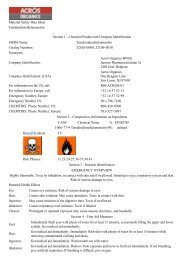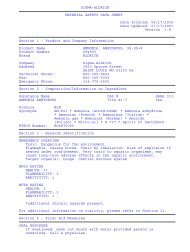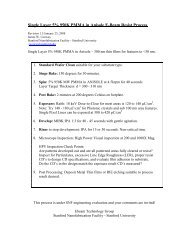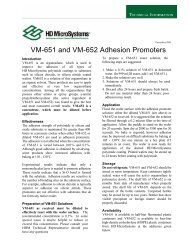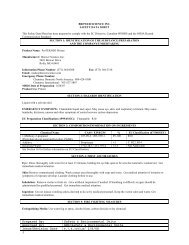EE 410 / Saraswat Handout #3 - Stanford Nanofabrication Facility
EE 410 / Saraswat Handout #3 - Stanford Nanofabrication Facility
EE 410 / Saraswat Handout #3 - Stanford Nanofabrication Facility
You also want an ePaper? Increase the reach of your titles
YUMPU automatically turns print PDFs into web optimized ePapers that Google loves.
<strong>EE</strong><strong>410</strong> / <strong>Saraswat</strong> <strong>Handout</strong> <strong>#3</strong><br />
Procedure:<br />
• At wbnonmetal, dip for 20 minutes in 9:1 concentrated sulfuric acid: 30% hydrogen<br />
peroxide, heated to 120 C<br />
• Rinse in the quick dump rinse tank for 6 cycles (about 4 minutes)<br />
• Spin rinse/dry in the Semitool spinner (about 5 minutes)<br />
• Visually inspect to ensure complete resist removal<br />
3A. 2. Standard Hard Resist Strip: gasonics and wbnonmetal<br />
Purpose: To remove hardened photoresist from “clean” wafers.<br />
Method: As described above, certain processes (including longer plasma etches, heavy ion<br />
implantations, hard bakes or UV cures) can cross-link the resist surface, leaving a hardened<br />
"skin" which can be removed using oxygen plasma. The gasonics plasma etcher is<br />
recommended for removing resist from "Clean" substrates. The gasonics is a downstream,<br />
microwave plasma system which uses quartz lamps to heat the substrate for more efficient resist<br />
removal. "Downstream" is critical for CMOS; in the matrix and in other plasma etchers in the<br />
lab, the substrate resides directly between the RF electrodes generating the plasma. This leads to<br />
plasma damage if the silicon gate is exposed; this also leads to device damage due to the<br />
"antenna effect" when metal lines are exposed. Since the oxygen plasma in the gasonics is<br />
generated upstream of the substrate, such damage is avoided in this system. (So, when designing<br />
your CMOS process flows, make sure to be careful in your selection of available equiment!)<br />
Processing on the gasonics alone can leave some residual organic particulate on the wafer edge.<br />
So, a short, piranha clean following plasma strip is done.<br />
When to use: For "clean" wafers in which resist may have been hardened. Also<br />
recommended for "clean" wafers with thick photoresist, hardened or not.<br />
How to process:<br />
• Process in gasonics, program 013.<br />
• Shortened piranha clean at wbnonmetal: 10 minutes in 9:1 concentrated sulfuric acid &<br />
30% hydrogen peroxide, heated to 120 C<br />
• Rinse in the quick dump rinse tank for 6 cycles (about 4 minutes)<br />
• Spin rinse/dry in the Semitool spinner (about 5 minutes)<br />
• Visually inspect to ensure complete resist removal<br />
3A. 3. Standard Metal Layer Resist Strip: gasonics and wbmetal<br />
Purpose: To remove photoresist from “semiclean” wafers.<br />
Method: Piranha corrodes non-noble metals, including aluminum. So, resist removal consists<br />
of ashing the resist in the gasonics etcher, followed by dipping in PRX-1000, a commercial,<br />
alkaline-based organics stripper. The PRX-1000 dip is also used as the standard pre-anneal<br />
Revised Jan. 11, 2008 Page 7/47




